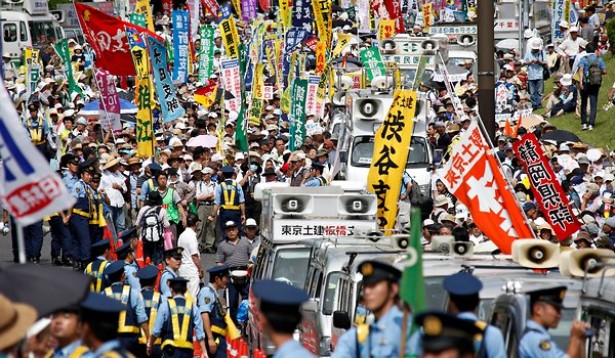
Anywhere from 75,000 to 170,000 protesters gathered in Japan’s Yoyogi Park outside Prime Minister Yoshihiko Noda’s official residence on July 16 to register their opposition to the restarting of the country’s nuclear program, which is under way.
Japan had shut down all 50 of its nuclear reactors after the tsunami for safety checks as public concern grew about the stability of such power facilities in an environment of earthquakes and tsunamis. In the wake of the March 2011 devastating earthquake and tsunami, it is debatable whether even the sturdiest of reactors could withstand such a catastrophic event.
The Fukushima Daiichi No. 1 nuclear power plant in northern Japan is a prime example, as the two events caused meltdowns and released massive amounts of radiation. It might not take much of a jolt to spark a nuclear disaster that would reach the U.S. and Canadian west coasts, many fear.
In the 2011 disaster, Reactor No. 4 at Fukushima suffered an explosion and fire that blew away the walls and roof of the steel-reinforced concrete building, Shukan Asahi Weekly Magazine reported in May 2012.
The New York Times reports that “tens of thousands of protesters now gather every week to shout slogans in front of Mr. Noda’s official residence.”
This past Monday was one of the biggest anti-nuclear demonstrations yet, the Times reported. Nuclear power supplies about 30 percent of the country’s electricity, according to Reuters.
Two Kansai Electric Power Co. reactors have passed safety checks and been restarted, also in the face of protests. A third will be put back online later in July, Reuters said with more restarts rolled out over the next few months, according to the Times. Meanwhile, surveys have shown that 70 percent of Japanese want to eventually phase out nuclear energy altogether, Reuters reported.
© 1998 - 2012 Indian Country Today. All Rights Reserved To subscribe or visit go to: http://www.indiancountry.com